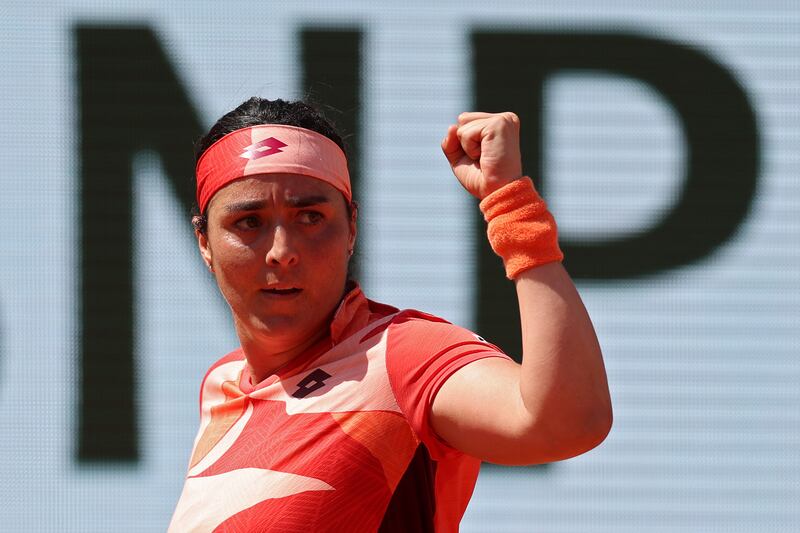Ons Jabeur entered the French Open last year with her career on the rise. Having won the Madrid Open, her first WTA 1000 title, she immediately followed it with victory in Rome. Jabeur began the second grand slam tournament of the year as second favourite but crashed out in the first round.
One year on, the 28-year-old returned under completely different circumstances. She has spent much of this season injured, with setbacks continually halting her attempts to re-establish top form. Still, the seventh seed continues to advance through the draw. On Monday, Jabeur eased past Bernarda Pera 6-3, 6-1 to reach the quarter-finals at Roland Garros for the first time.
By finally making a long-awaited extended run at the tournament where she first made her name by winning the 2010 junior title, Jabeur has now reached the quarter-finals of every grand slam.
Despite her first-round defeat in Paris, Jabeur’s clay season last year paved the way for a breakthrough season as she became the first Arab and African player to reach the Wimbledon and US Open finals, rising to a career-high of number two. She had started this year with hopes of chasing down Iga Swiatek at number one, but shortly after the Australian Open in January, Jabeur underwent minor knee surgery and was sidelined for two months.
READ MORE
Just as it seemed like Jabeur had rediscovered her form, disaster struck again. The Tunisian won her first title of the year on the green clay of Charleston but three games into her Stuttgart match against Swiatek, she was forced to retire with a calf injury. She arrived in Paris undercooked, mentally sharp but still managing both her injury and the frustration that has come with it.
“I have learned a lot how to accept things, either good or bad,” Jabeur said. “For me, being injured was part of my path, how the season would have started here this year. I worked a lot on my mental health and worked a lot on how to manage all this, because I believe a lot of injuries are connected to our emotional part. I’m trying to manage that.”

Jabeur has proven that her varied, well-rounded game works on every surface, but nothing suits it like clay. Her groundstrokes are potent enough to hit through slow conditions, she instinctively knows how to open up angles and has the delicate hands to suffocate opponents with drop shots. It is the only surface, she says, that she can thrive on without any prior matches. Given her physical issues, that is proving vital in Paris.
“These things take a lot of time,” she said. “I have to accept my current condition now because I was injured quite a lot of times this year. So this happens. I’m not going to be impatient. I will give time to my body to adapt. And right now I’m winning matches without being at 100 per cent, so I’m learning.”
SIUUUUU 🗣️#RolandGarros | @Ons_Jabeur pic.twitter.com/kZQcqikHZG
— Roland-Garros (@rolandgarros) June 5, 2023
After so much bad luck, a decent draw has certainly helped, providing her with time to shake off the rust in her game. Jabeur has not faced a seeded player so far and Pera, number 36 in the world, was her highest-ranked opponent. In her third round against the in-form Olga Danilovic, Jabeur looked exhausted midway through the second set but she demonstrated her mental fortitude by recovering from a set down to win.
She has put herself in contention deep in a grand slam tournament for the third time in her last four attempts and the positive outlook that has carried her career for years remains unchanged.
“These things happen,” Jabeur said. “Tennis is a very tough sport. But I’m glad that I’m healthy now, I mean, trying to get there hopefully and be ready to win my first grand slam.” She will next face Beatriz Haddad Maia, who outlasted Sara Sorribes Tormo 6-7 (3), 6-3, 7-5 in a marathon three-hour 51-minute battle.













